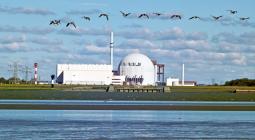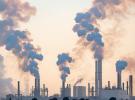EU’s renewables and green hydrogen legislation held up by ministerial 'disagreement' over nuclear H2

National-level disagreements over the EU’s green hydrogen targets has left a critical piece of the bloc’s climate legislation floundering — despite leaders reaching a landmark political agreement just a few months ago.
The overhaul of the EU’s critical Renewable Energy Directive 2 (RED II) — which effectively include the associated Delegated Acts governing the definition of green hydrogen — is now reportedly stuck in a political quagmire as ministers in the European Council squabble over exemptions to the climate legislation’s binding green H2 targets for heavy industry.
The target was set at 42% of green hydrogen (known as renewable fuels of non-biological origin, or RFNBOs in EU jargon) in industrial H2 use by 2030, ramping up to 60% by 2035.
The dispute is understood to relate to an exemption that allows France and other nuclear-heavy nations to undercut the target by using nuclear-derived H2 instead.
The thorny issue of nuclear’s role in EU hydrogen production was supposed to have been solved by the European Commission (EC) signing off a final version of the Delegated Acts in February, and the political agreement between the EC and the Council on the binding targets and exemptions in March.
The agreement leaves room for individual member states to reduce their renewable H2 targets by 20% under two conditions: if their national contribution to the binding overall EU renewables target meets their expected contribution, and if the share of hydrogen from fossil fuels consumed in the member state is not more than 23% in 2030 and 20% in 2035.
This would allow France to meet its target at 22% of renewable hydrogen in 2030 rather than 42% (and 40% in 2035, not 60%), by virtue of the fact that most of the remainder would be made up of nuclear-derived H2.
But the accord appears to have dissolved, with anti-nuclear Germany believed to be at the centre of the row, leaving the landmark RED II legislation — which also sets binding new renewable energy targets for the bloc — in limbo.
The EU Council, made up of ministers and leaders from the bloc’s nation states, is a key branch of EU government, alongside the executive branch (the European Commission) and the legislative branch (the European Parliament).
“We are extremely concerned that the adoption of these measures is held up by a disagreement within Council on exemptions regarding a sub-target for the use of renewable fuels of non-biological origin,” warned an open letter to the European Council’s Swedish president, signed by 20 of the bloc’s biggest renewable energy and hydrogen trade associations, including WindEurope, SolarPower Europe, the Renewable Hydrogen Coalition and Hydrogen Europe.
“This disagreement is delaying the implementation of provisions, in particular on permitting, that are indispensable to the accelerated development of renewables,” it added.
Every day that passes without a final Renewable Energy Directive slows the deployment of renewables projects that are badly needed to deliver globally competitive and home-grown energy to European businesses and families.”
Disputes over the role of nuclear in the EU’s hydrogen mix have been raging for months.
Efforts by France and other nuclear-rich European nations to include pink hydrogen derived from nuclear power in the EU’s definition of “renewable hydrogen” were met with stiff resistance from Germany and six other countries.
In the end, nuclear was not included, although countries with a low-carbon grid were granted exemptions from the need to prove that renewable hydrogen came from “additional” wind and solar capacity.
This means that green hydrogen producers in France can use grid electricity to make renewable H2 — although they still must prove that it comes from renewable sources, via a power purchase agreement (PPA).






